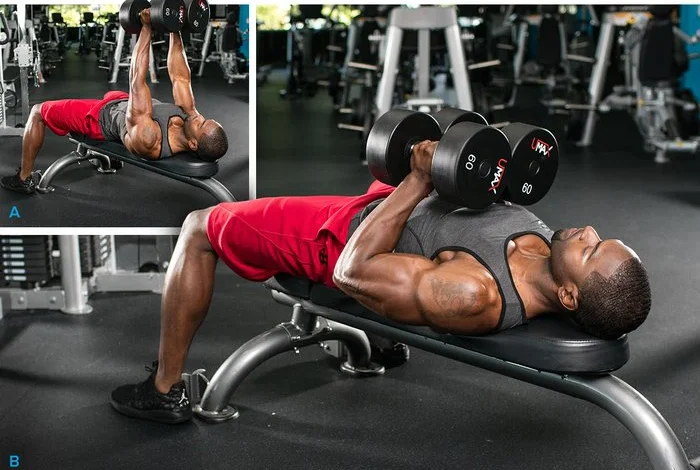MASTER THE DUMBBELL BENCH PRESS: PERFECT FORM FOR MAXIMUM GAINS

A mainstay of many strength training regimens, the dumbbell bench press is a traditional exercise that successfully works the triceps, shoulders, and chest. Perfect form when performing the dumbbell bench press maximizes muscle engagement and reduces chance of injury. To make sure you’re getting the most out of this crucial exercise, this tutorial will lead you through the stages whether you’re using a flat press bench or a flat bench press machine.
Why the Dumbbell Bench Press?
The dumbbell bench press offers several advantages over the barbell bench press and other chest exercises:
- Dumbbells allow for a deeper stretch at the bottom of the movement, leading to better muscle activation.
- Using dumbbells helps prevent muscle imbalances since each arm works independently.
- The freedom of movement with dumbbells can be easier on the shoulders and wrists compared to a fixed barbell.
Equipment Needed
To perform the dumbbell bench press, you’ll need:
- Dumbbells: Choose a weight that challenges you but allows you to maintain proper form.
- Flat Press Bench or Flat Bench Press Machine: A sturdy bench to lie on during the exercise.
Step-by-Step Guide to Perfect Form
- Setup
Start with a manageable weight, especially if you’re new to the exercise.
Ensure the bench is flat and stable. If you’re using a flat bench press machine, adjust it to a flat position.
- Starting Position
- Place the dumbbells on your thighs, close to your knees.
- Lean back onto the bench, simultaneously lifting the dumbbells to shoulder height. Your feet should be flat on the floor, and your head, shoulders, and hips should be in contact with the bench.
- Your palms should face forward, with the dumbbells aligned with your shoulders. Your elbows should be bent at a 90-degree angle.
- Execution
- Push the dumbbells upward until your arms are fully extended but not locked out. Your wrists should remain neutral, and the dumbbells should stay in line with your shoulders.
- Return the dumbbells to the beginning position gradually, making sure your elbows are at a 90-degree angle.
- To optimize muscle engagement and minimize the chance of injury, maintain control over your motions.
- Take a breath when lowering the dumbbells and release it when pressing them upward.
Tips for Ideal Shape
- Maintaining stability and lowering the chance of lower back discomfort are facilitated by a taut core.
- During the exercise, maintain a flat back against the bench.
- Do not lift the weights with momentum. To get the most muscle activation, concentrate on making fluid, deliberate motions.
- Make sure your feet remain level on the ground to establish a sturdy foundation.
Common Mistakes to Avoid
- Maintain a 45-degree angle between your elbows and your body to prevent needless strain on your shoulders.
- Keep your spine neutral and refrain from overarching.
- To guarantee complete muscle activation, lower the dumbbells until your elbows are at a 90-degree angle.
Benefits of Using a Flat Press Bench or Flat Bench Press Machine
- Both the flat press bench and flat bench press machine offer unique benefits:
- Provides a natural range of motion and engages stabilizer muscles. It’s versatile and allows for a variety of exercises.
- Offers guided movement, which can be beneficial for beginners or those recovering from injuries. It ensures proper form by restricting unnecessary movements.
Final Thoughts
One effective exercise that can help you develop a strong, well-balanced upper body is the dumbbell bench press. You may get the most out of this workout and reduce the chance of injury by following the above-mentioned procedures and paying close attention to your form. To reach your fitness goals, using a flat press bench or a flat bench press machine alike requires consistency and good form.






